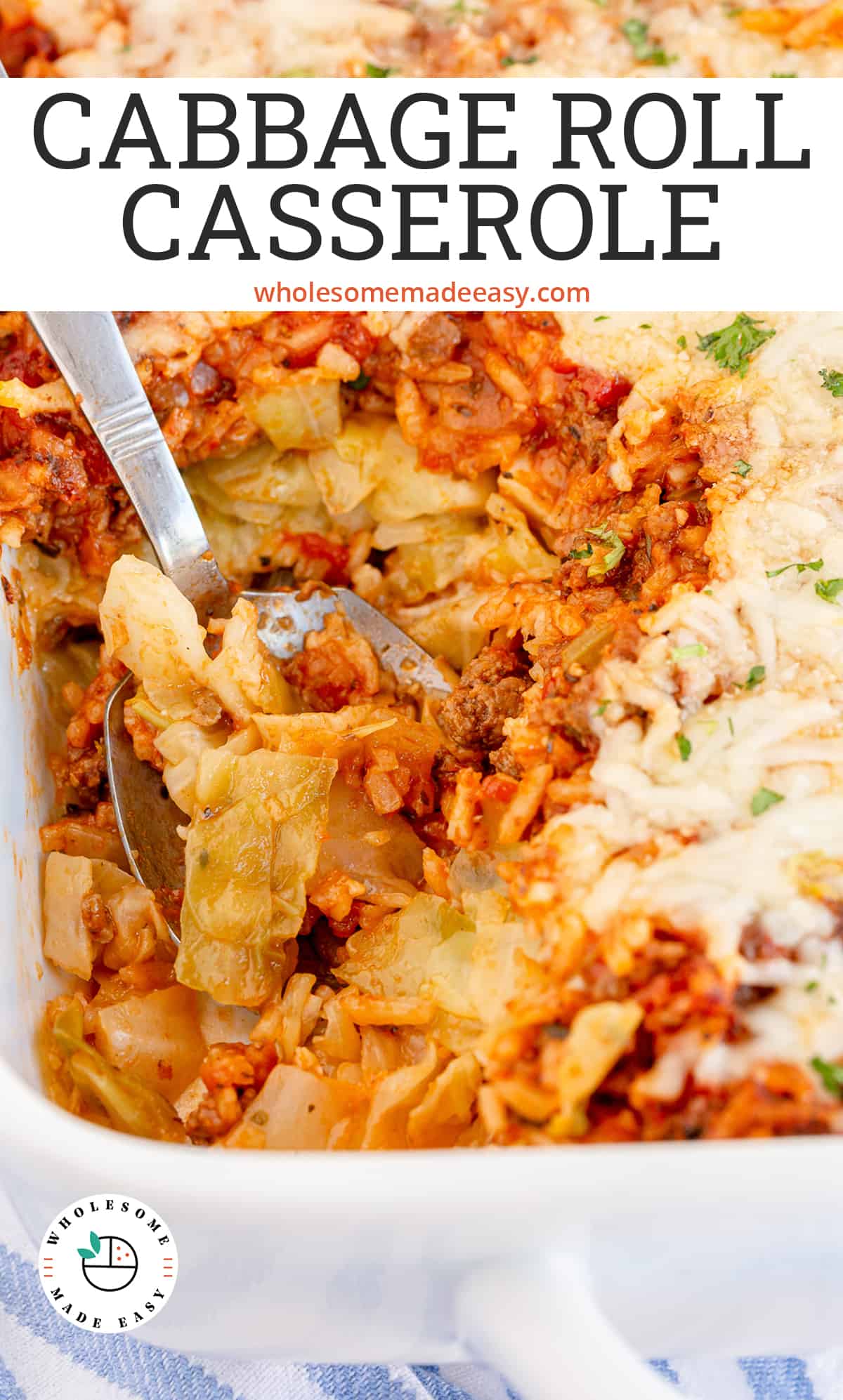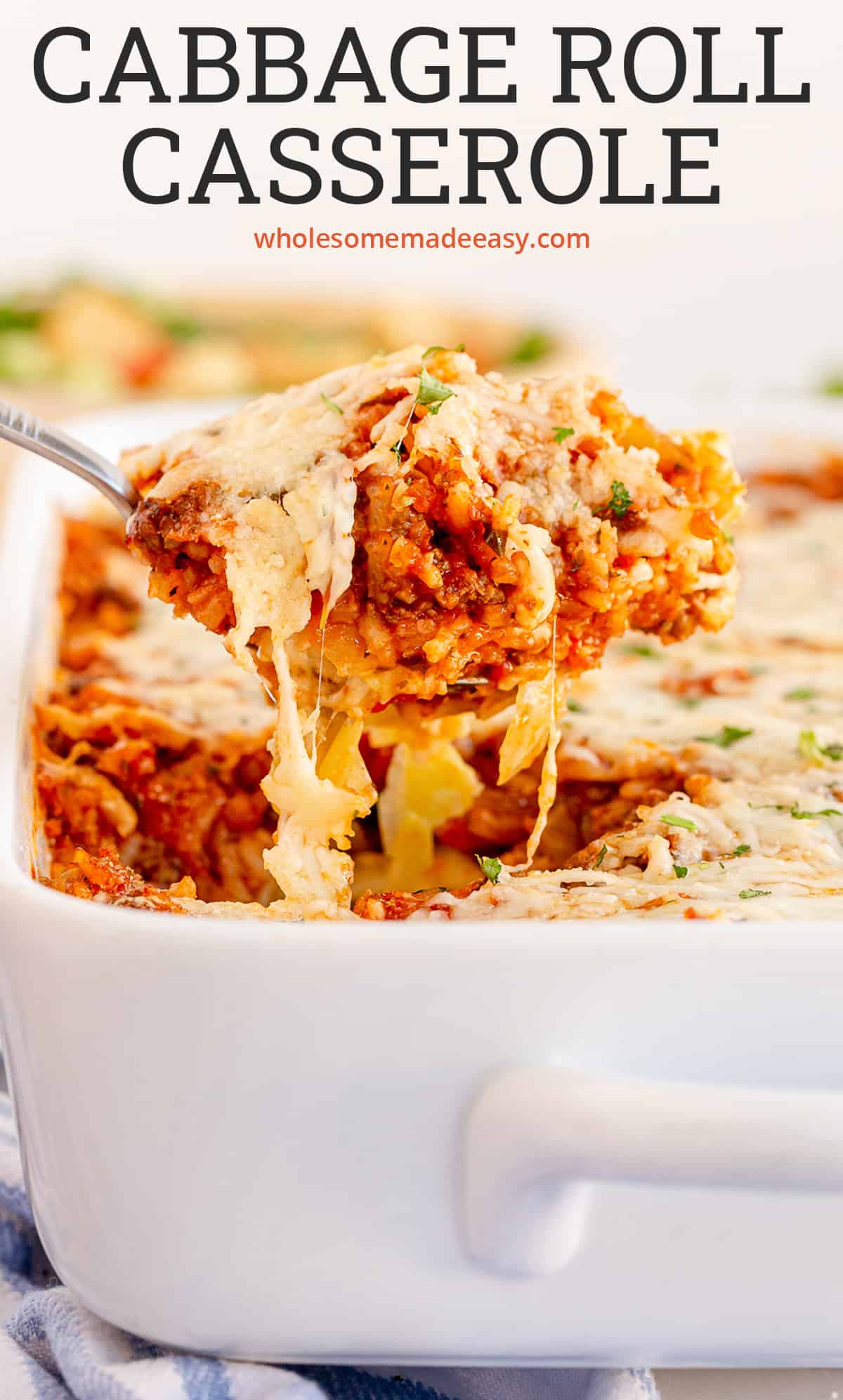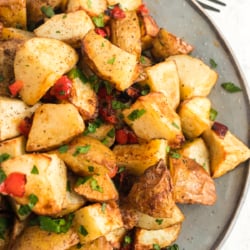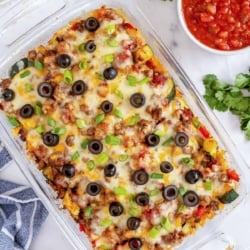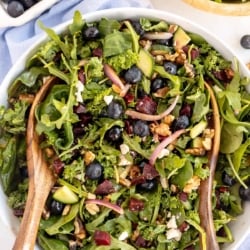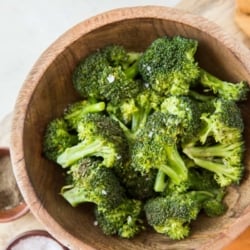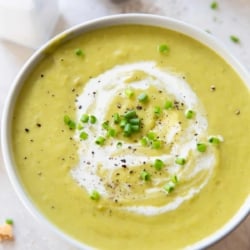A saucy ground beef and rice mixture is layered with cabbage and cheese to create this comforting Cabbage Roll Casserole. This freezer-friendly casserole is a great make-ahead meal for a busy day.
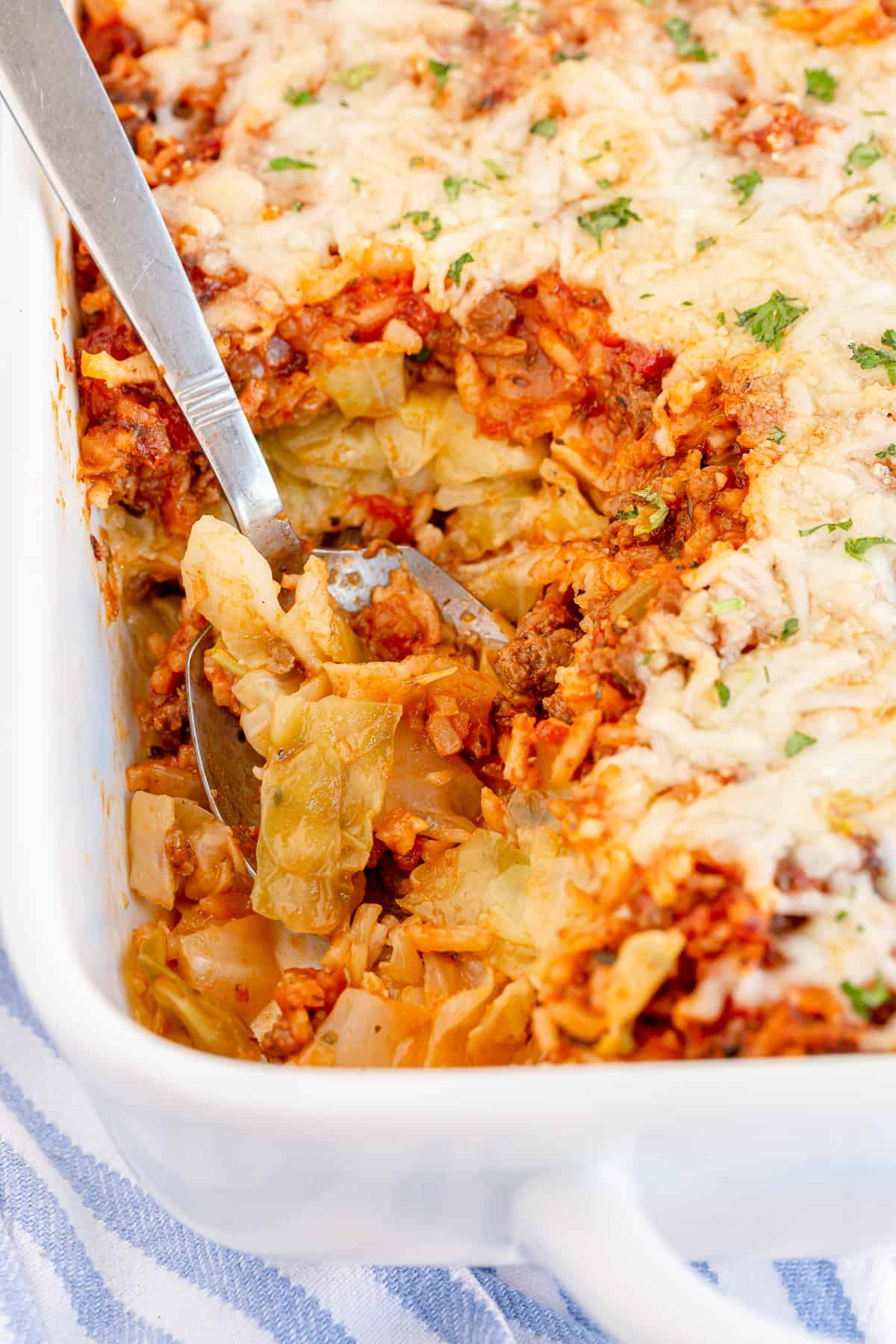
This deconstructed cabbage roll recipe is my go-to when the cabbage roll craving strikes. It is so much easier to assemble than the traditional rolled variety and it makes a substantial amount which means I can depend on leftovers. It’s also a great recipe to make ahead and freeze for a busy day.
It’s surprising to me how sweet and delicious green cabbage becomes after it is sautéed in a little olive oil. But, it becomes something truly special when it is layered with an Italian seasoned meat and rice sauce and a generous amount of cheese.
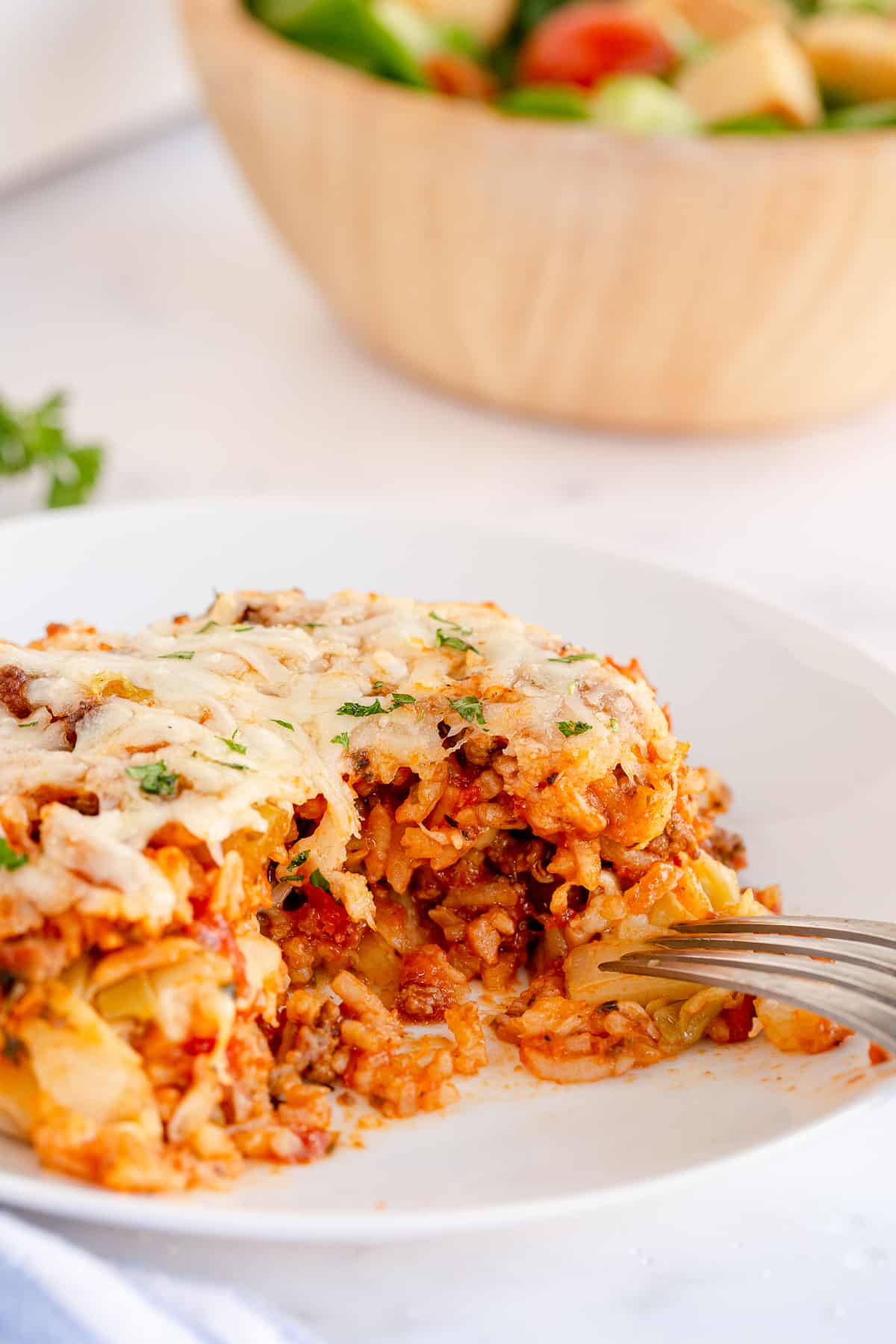
Low Calorie and Nutrition Packed
Adding Cabbage Roll Casserole to your menu is an exceptionally family-friendly way to boost the fiber content of your diet. People of all ages will love this meal! Cabbage is also an excellent source of vitamin C and antioxidants and all that fiber is known to aid in digestion. Choose a gluten free marinara sauce for a naturally gluten-free casserole.
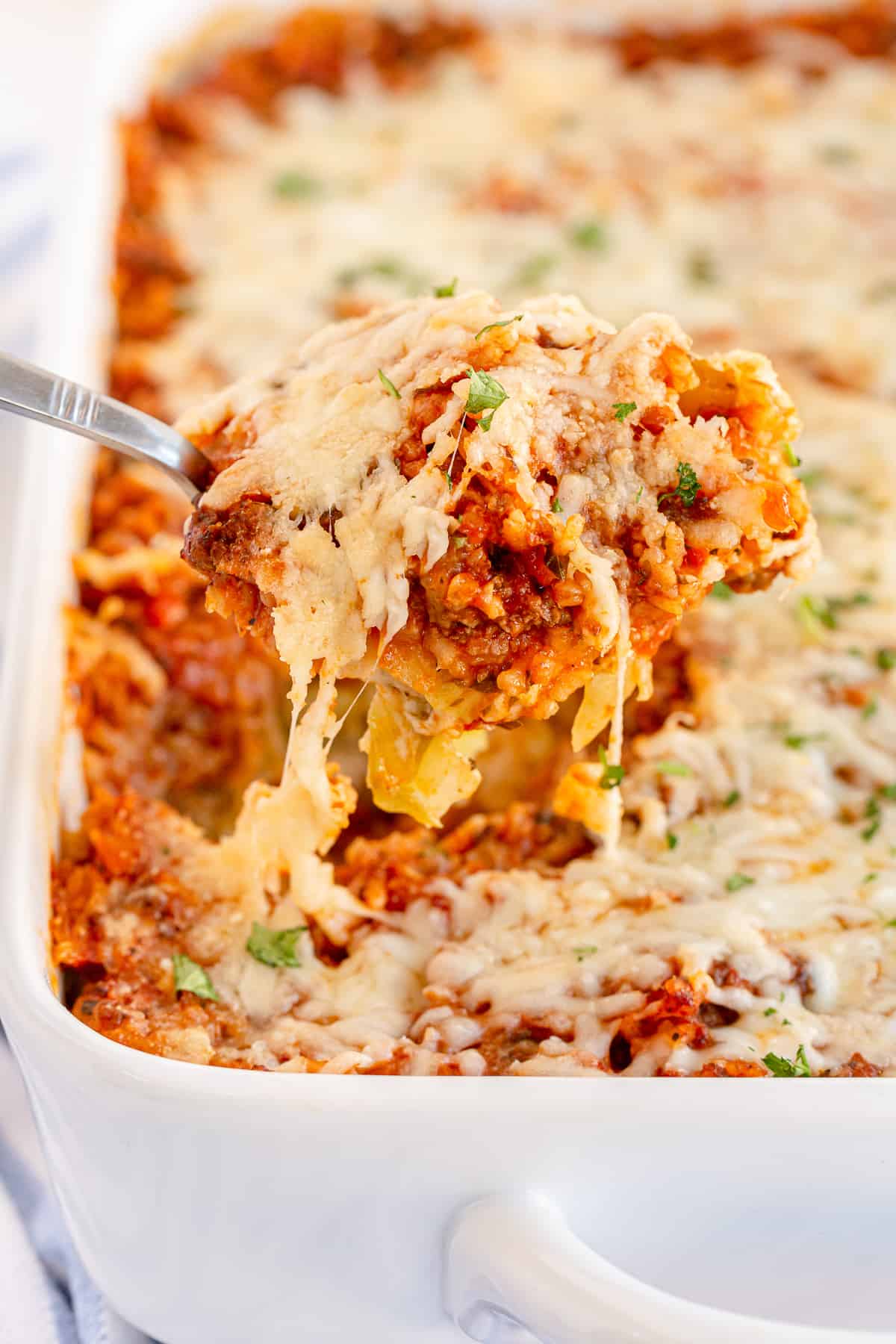
Ingredient Notes
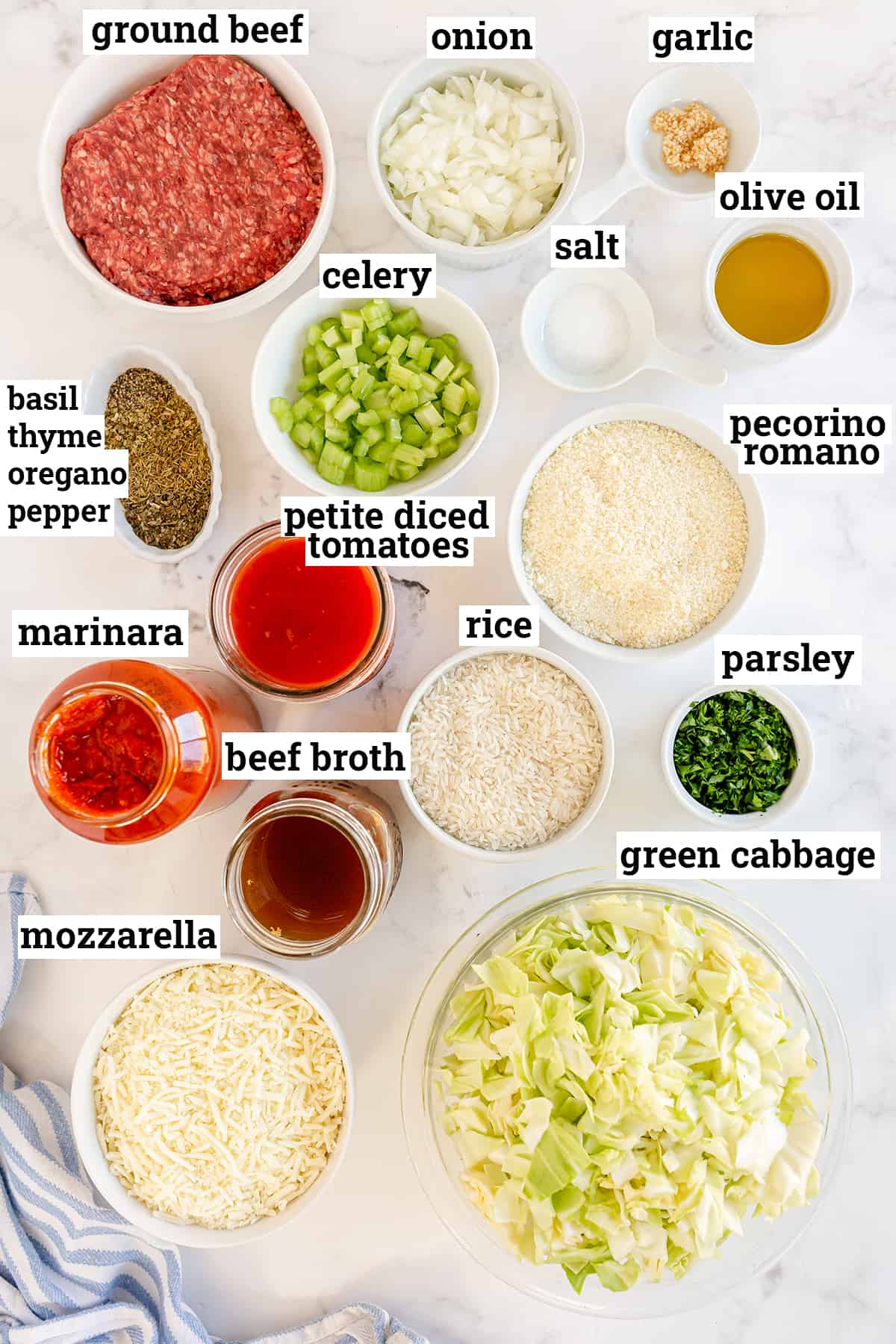
- 90% lean ground beef – beef is great for this casserole but ground pork will work as well.
- Uncooked long grain white rice – like Jasmine or basmati.
- Marinara sauce – Many brands of marinara contain a very high level of sodium. Look for a low-sodium sauce with no added sugars (I like Silver Palate brand).
- Part-skim mozzarella – The part-skim variety adds cheesy goodness with less fat and calories.
- Pecorino Romano or Parmesan – Pecorino Romano is a hard, salty cheese made with sheep’s milk. Parmesan, made with cow’s milk, also works. Either of these cheeses will add great flavor to this dish.
- Green cabbage – Pick up an average sized head of green cabbage. It will look like a ton of cabbage once you slice it up but you’ll need it all as it cooks down quite a bit.
How to Make Cabbage Roll Casserole
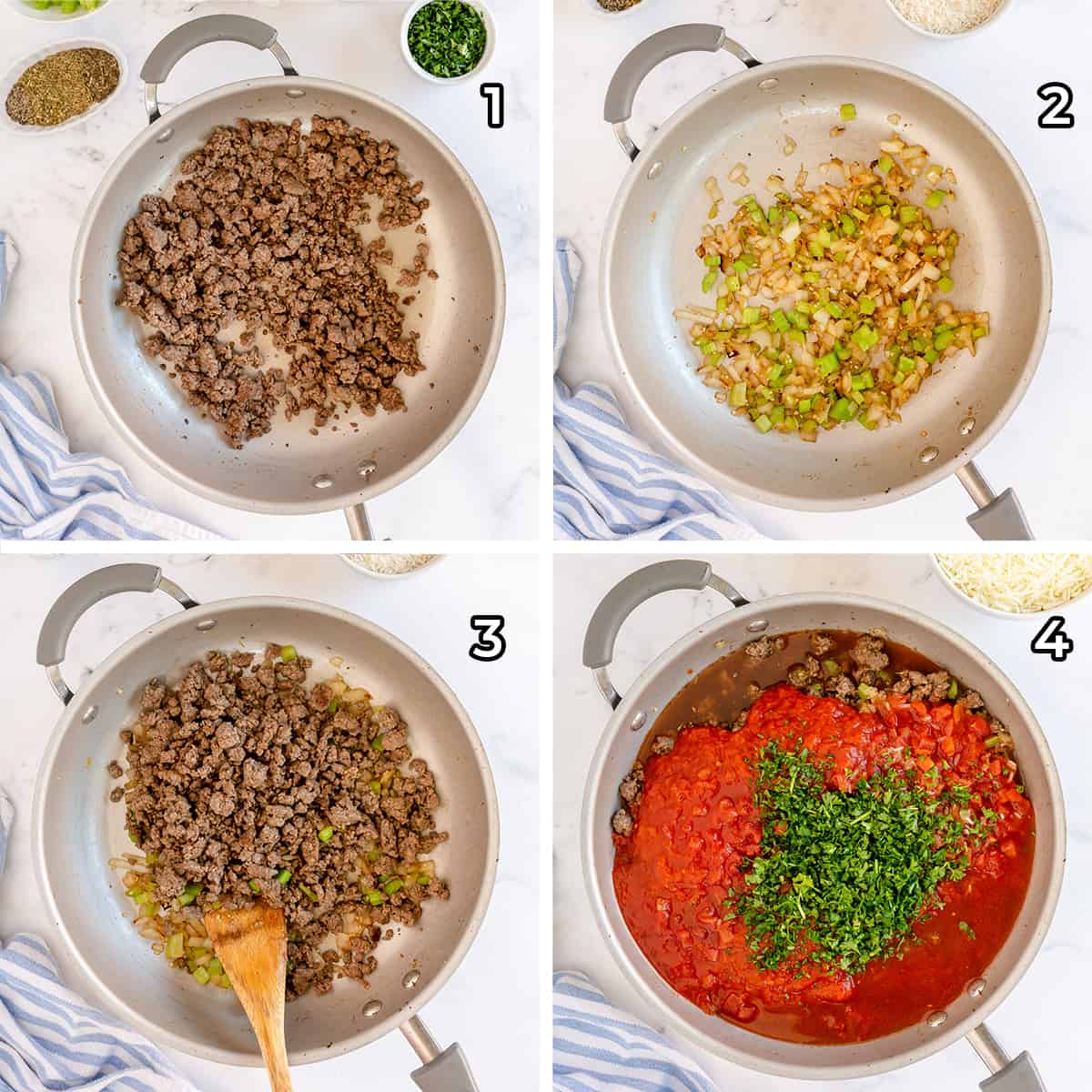
- Cook the ground beef, stirring to break up the meat, until cooked through and no longer pink, about 5 to 6 minutes. Drain off the excess grease and transfer the beef to a plate and set aside.
- Return the empty skillet sauté the onion and celery in olive oil, until the onion is translucent and celery is tender, about 5 minutes. Add the garlic and cook, stirring, for an additional 2 minutes.
- Return the beef to the skillet and season with salt, basil, thyme, oregano, and black pepper.
- Add the uncooked rice, marinara sauce, petite diced tomatoes, beef broth, and parsley, and stir well to combine. Bring the mixture to a low boil then reduce the heat, cover and simmer for about 25 to 30 minutes, or until most of the liquid has been absorbed and the rice is tender.
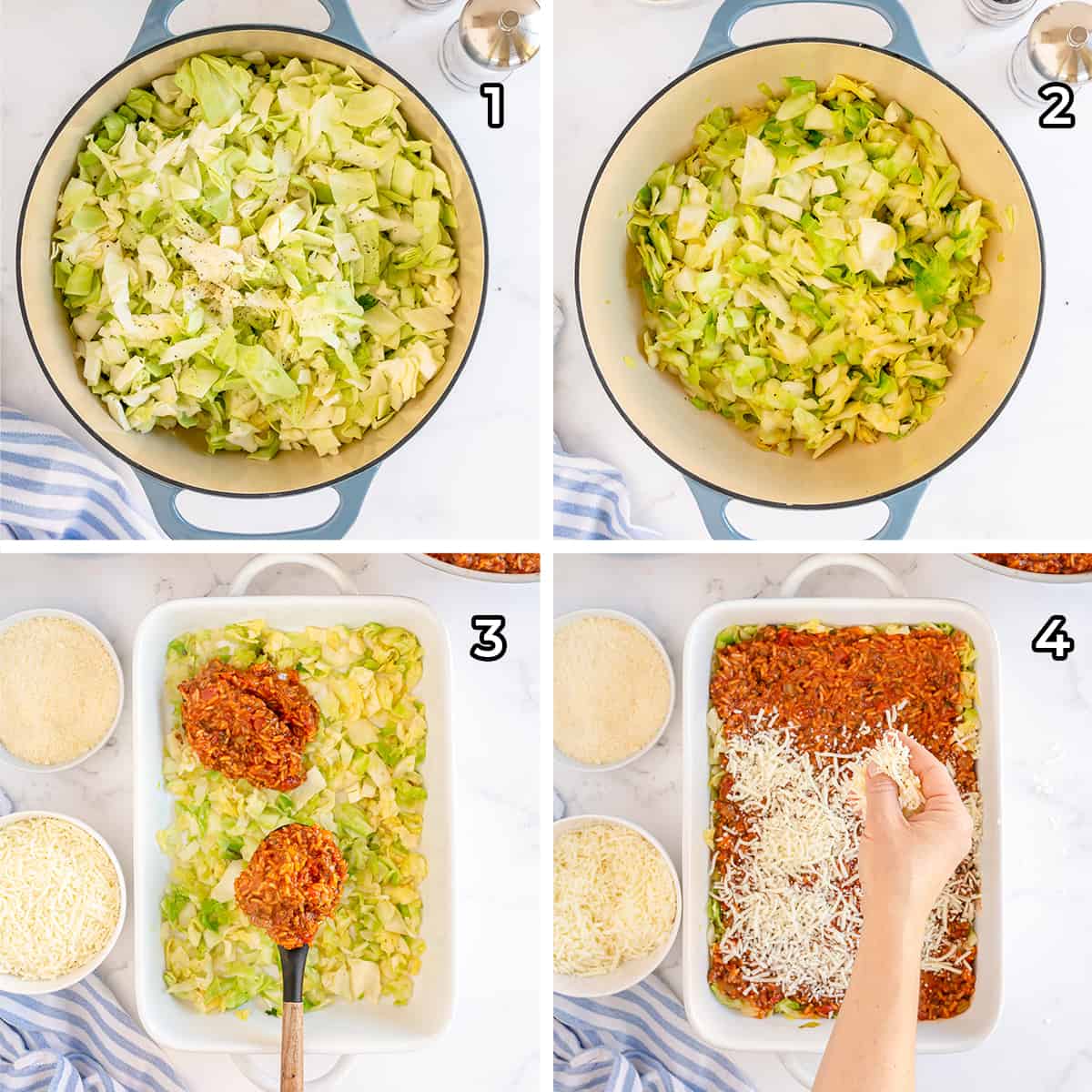
- While meat mixture is cooking, cook the cabbage in a little olive oil. Season with a little salt and black pepper, to taste.
- Cook, stirring occasionally, for about 5 minutes or just until cabbage is softened and fork tender. The cabbage will begin to brown but if it begins to burn, lower the heat under the pot. Remove the pot from the heat.
- Scatter half of the cabbage across the bottom of the prepared baking dish. Spoon half of the meat mixture over the top.
- Sprinkle with half the mozzarella and Parmesan.
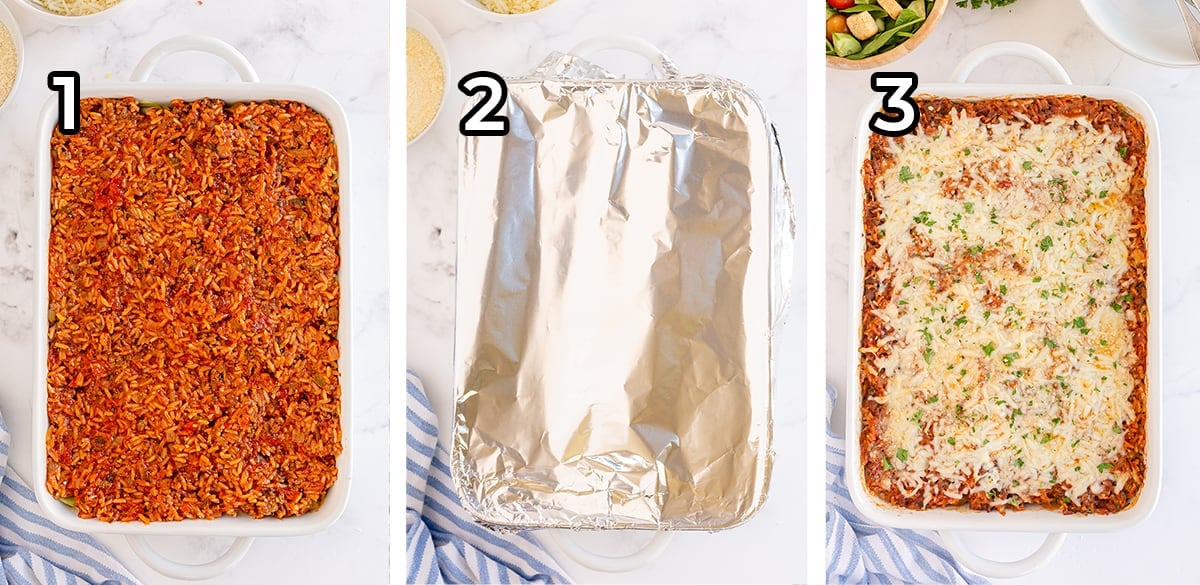
- Repeat layers with the remaining cabbage and meat mixture but reserve the top layer of cheese for later.
- Cover the baking dish with foil and bake for 25 minutes.
- Remove the foil, sprinkle the remaining cheese over the top, and continue to bake until it is melted and lightly browned. Let the casserole rest for about 5 minutes before serving.
Make-Ahead Instructions
Transfer the unbaked, foil covered casserole to the refrigerator overnight. Remove it from the refrigerator 30 minutes before you are ready to bake it and increase the baking time as needed to warm it through. Follow the instructions as written to top with the final layer of cheese and bake until melted.
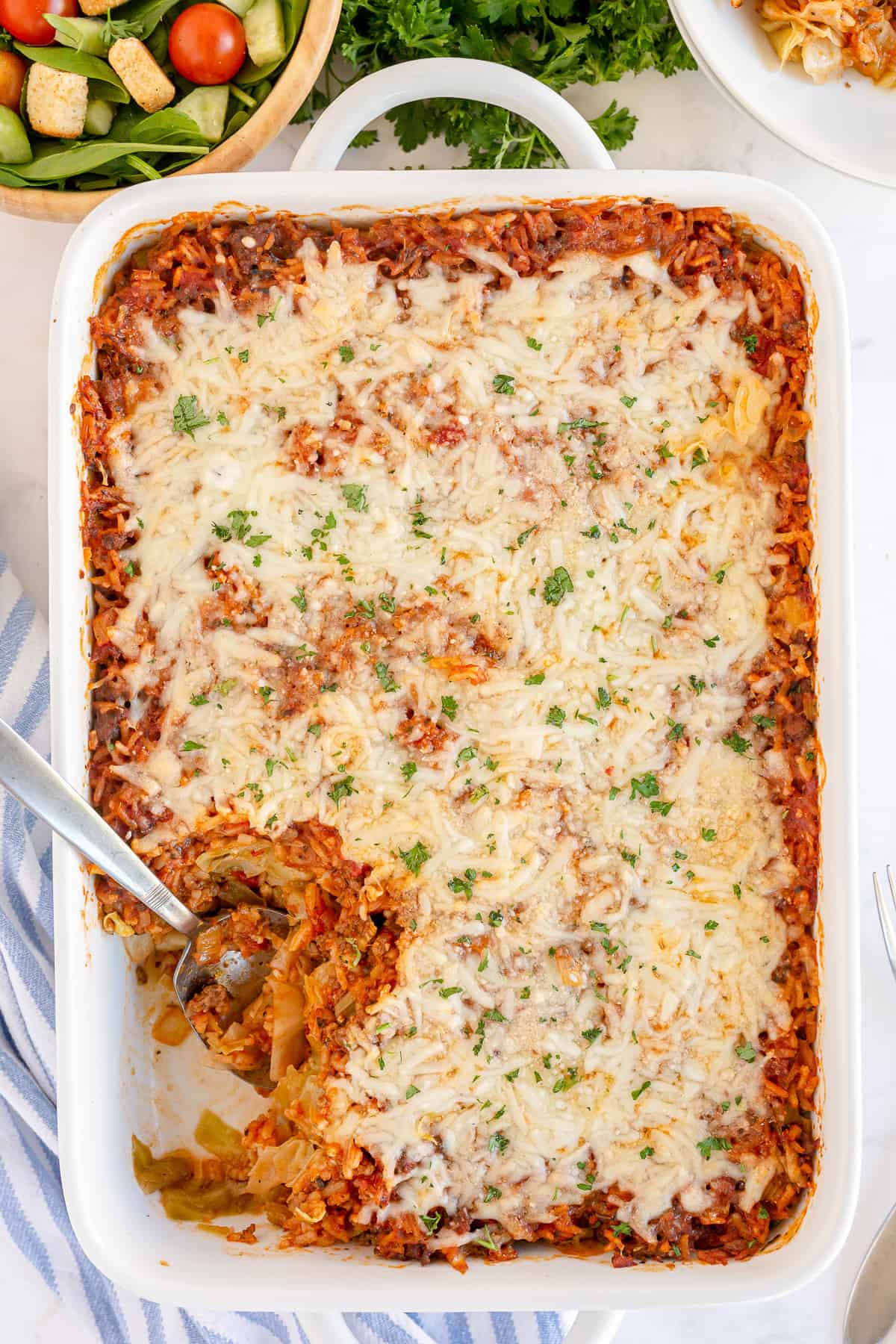
Make it a Freezer Meal
To use this recipe for weekend meal prep, I recommend freezing the assembled and completely cooled casserole before baking. Disposable 13- x 9-inch foil containers are inexpensive and a great choice for freezing casseroles, but any freezer safe container will do.
Cover the completely cooled, unbaked casserole with a layer of plastic wrap and then wrap the entire dish in a layer of heavy duty foil. Label the foil with the date and contents and freeze for up to 2 to 3 months. For two meals, divide the mixture between two smaller freezer-safe containers.
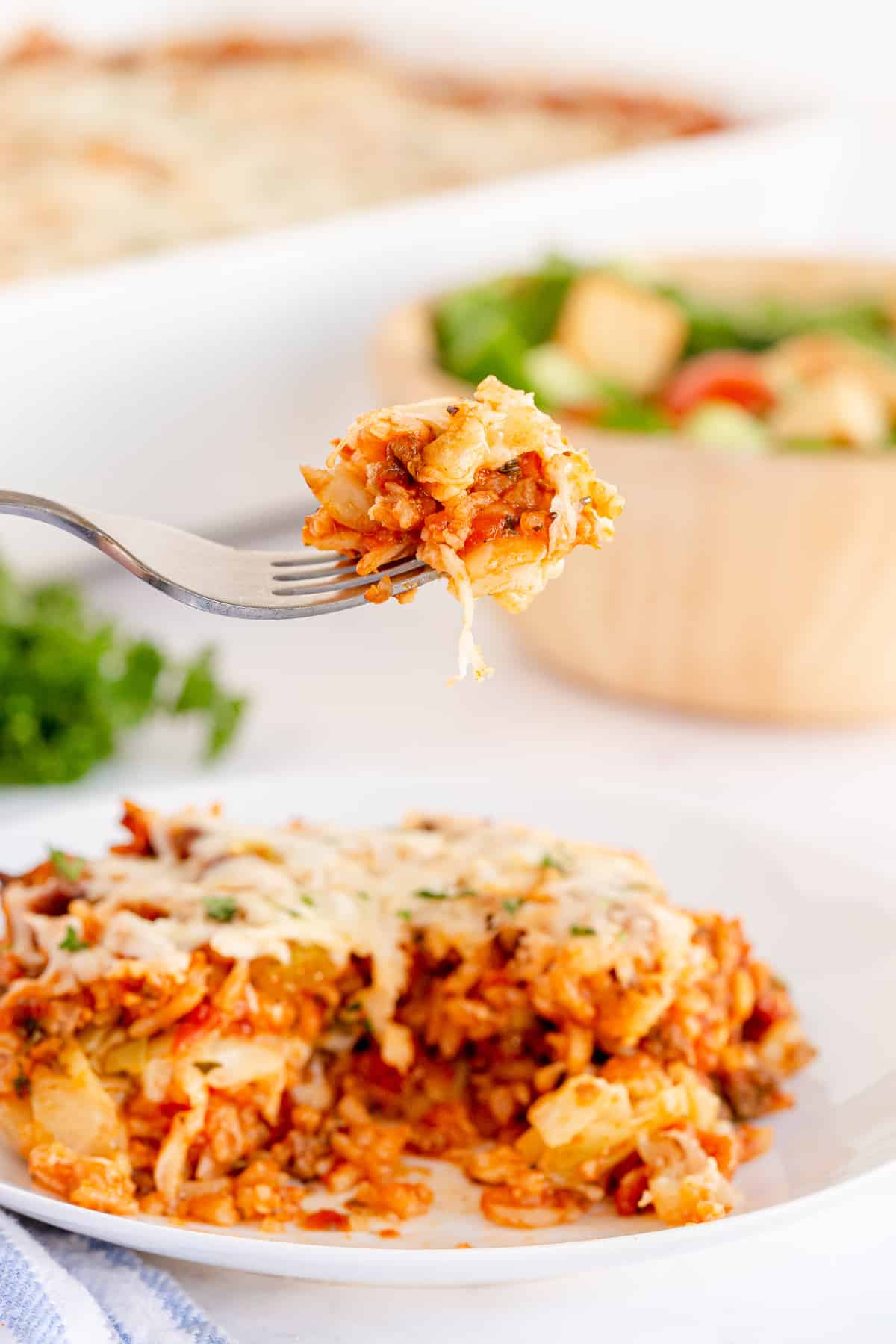
Baking a Frozen Casserole
Allow the Cabbage Roll Casserole to thaw completely in your refrigerator for 24 to 48 hours before baking for the best result. Remove the foil and plastic wrap and then replace the foil layer and bake according to the recipe directions, allowing additional time for the casserole to heat through.
If not thawed before baking, homemade frozen casseroles can bake unevenly, resulting in overcooked edges and soggy middles.
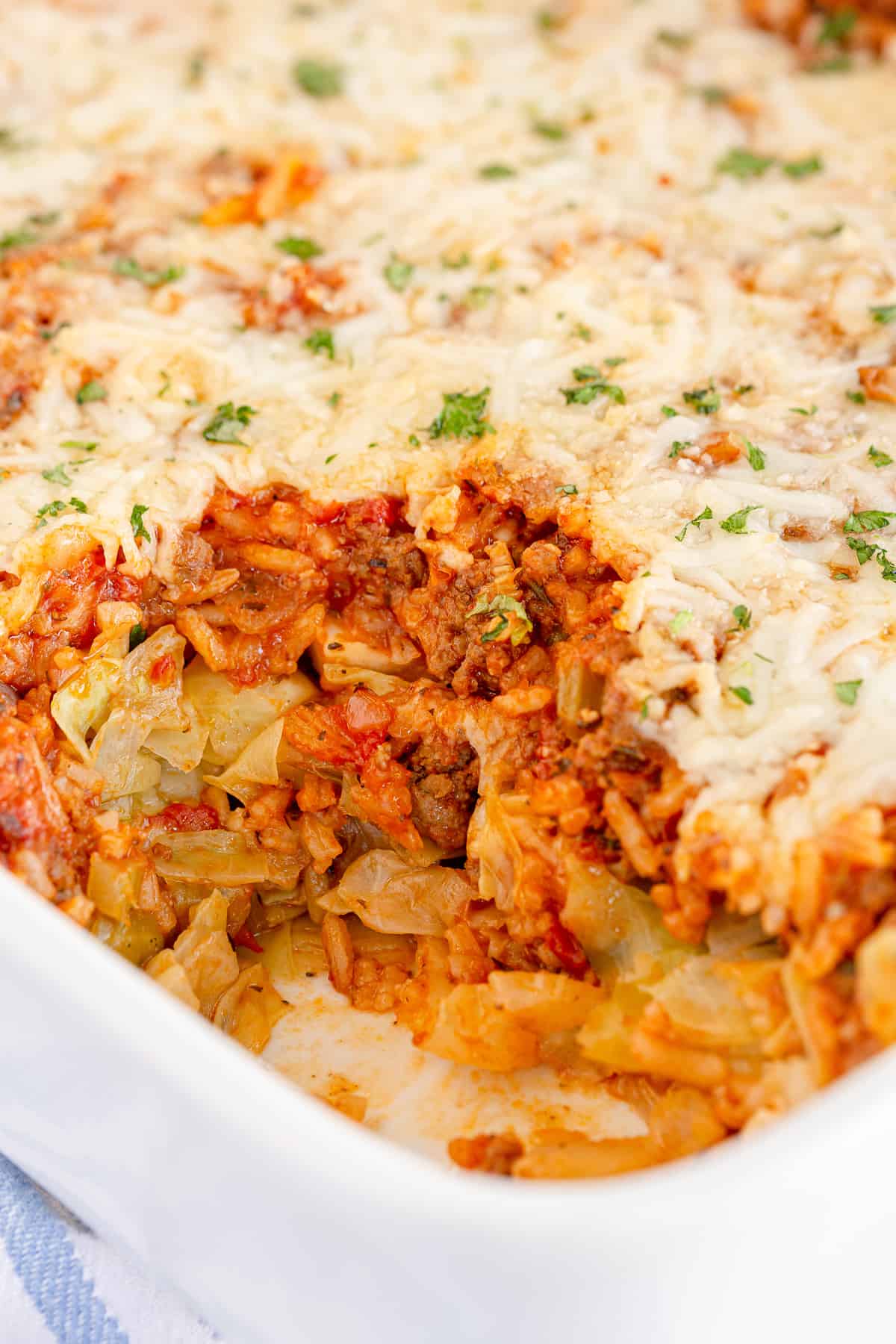
Storing Leftovers
Cover and refrigerate leftovers for up to 3 to 4 days. Reheat in the microwave or conventional oven and enjoy!
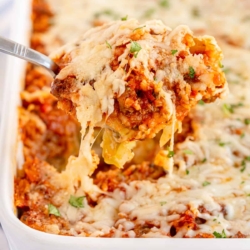
Cabbage Roll Casserole
Ingredients
- 1 pound 90% lean ground beef
- 3 tablespoons olive oil, divided
- 1 cup diced yellow onion
- ½ cup diced celery
- 1 teaspoon minced garlic
- 1 teaspoon salt, or to taste, divided
- 1 teaspoon dried basil
- ½ teaspoon dried thyme
- ½ teaspoon dried oregano
- freshly ground black pepper, to taste
- 1 cup uncooked long grain white rice
- 25 ounces marinara sauce, (look for a gluten free or low sodium variety with no added sugars)
- 15 ounces canned petite diced tomatoes
- 1 ¾ cups low-sodium beef broth
- ¼ cup fresh chopped parsley
- 1 head green cabbage, coarsely chopped (remove and discard tough center core)
- 2 ½ cups shredded part-skim Mozzarella cheese
- ¾ cup finely grated Pecorino Romano or Parmesan cheese
Instructions
- Coat a deep 12- to 14-inch non-stick skillet or sauté pan with non-stick cooking spray and place over MEDIUM heat. Add the ground beef and cook, stirring to break up the meat, until cooked through and no longer pink, about 5 to 6 minutes. Drain off the excess grease and transfer the beef to a plate and set aside.
- Return the empty skillet to the heat and add 1 tablespoon olive oil. Add the onion and celery and cook, stirring occasionally, until the onion is translucent and celery is tender, about 5 minutes. Add the garlic and cook, stirring, for an additional 2 minutes. Return the beef to the skillet and season with ½ teaspoon salt, basil, thyme, oregano, and black pepper. Add the uncooked rice, marinara sauce, petite diced tomatoes, beef broth, and parsley, and stir well to combine. Bring the mixture to a low boil then reduce the heat, cover and simmer for about 25 to 30 minutes, or until most of the liquid has been absorbed and the rice is tender (taste to check).
- Preheat oven to 350 degrees F. Coat a 13- x 9-inch baking dish with non-stick cooking spray.
- While meat mixture is cooking, add remaining 1 tablespoon of olive oil to a Dutch oven and place over MEDIUM heat. When oil is hot add the cabbage and season with remaining ½ teaspoon salt and black pepper, to taste. Cook, stirring occasionally, for about 5 minutes or just until cabbage is softened and fork tender. The cabbage will begin to brown but if it begins to burn, lower the heat under the pot. Remove the pot from the heat.
- Scatter half of the cabbage across the bottom of the prepared baking dish. Spoon half of the meat mixture over the top and sprinkle with half the mozzarella and Parmesan. Repeat layers with the remaining cabbage and meat mixture. Reserve remaining cheese for later.
- Cover the baking dish with foil and transfer to the preheated oven. Bake for 25 minutes. Remove the foil, sprinkle the remaining mozzarella and Parmesan cheese over the top, and continue to bake for an additional 15 minutes until cheese is melted and lightly browned. Remove from the oven and allow the casserole to sit for at least 5 minutes before serving.
Notes
Nutrition
Nutrition information is automatically calculated using generic ingredients, and is an estimate not a guarantee. For more accurate results, please refer to the labels on your ingredients at home. All information provided regarding nutrition on this website is intended to be used for informational purposes only. Content related to nutrition is not medical advice nor is it intended to replace medical advice. The website is not intended to diagnose, prescribe, or treat any disease, condition, illness, or injury. Before beginning any diet program, modifying your diet, or making changes to the diet of a child in your care, including following the nutrition information available on the website, you should seek advice from a licensed professional.
